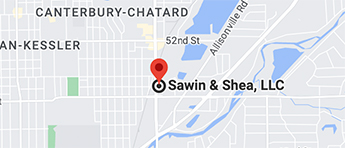When filing Chapter 7 or Chapter 13 bankruptcy, it’s critical to understand the difference between consumer debt and non-consumer debt. Your consumer and non-consumer debts impact your ability to file Chapter 7 bankruptcy, and your debt types also determine what’s protected by an automatic stay when filing Chapter 13 bankruptcy.
If you’re considering filing Chapter 7 or Chapter 13 bankruptcy, consider enlisting the help of skilled bankruptcy attorneys. They can assist you through the bankruptcy process and can keep creditors from unlawfully harassing you.
In order to understand the bankruptcy process, here’s what you need to know about consumer debt and non-consumer debt.
What is Consumer Debt?
Consumer debt refers to an individual, family, or household’s debts incurred through personal spending and expenses. Some examples of consumer debt include:
- Personal credit card debt
- Store financing
- Home mortgages
- Rental furniture
- Personal lines of credit and bank loans
- Vehicle leases, which can include cars, planes, boats, and more
- Cosmetic-based medical debt
- Family or personal legal fees
If your debts have to do with personal or family spending rather than business expenses, penalties, and taxes, they are likely consumer debts.
What is Non-Consumer Debt?
Non-consumer debts include business spending and expenses, as well as different taxes and penalties. Examples of non consumer debts include:
- Alimony
- Child support
- Traffic tickets
- Parking tickets
- Criminal restitution
- Business loans
- Personal guarantees
- Business property mortgages
- Business-related legal fees
- Taxes
Are Student Loans Consumer or Non-Consumer Debts?
You may have noticed that we didn’t list student loans in the consumer and non-consumer categories. The reason for this is because the student loan debt classification depends on multiple factors, including whether the loans were primarily spent on tuition, which would likely fall under non-consumer, or for daily expenses and rent, which a court would likely consider consumer debt.
Because the interpretation of whether student debt is consumer or non-consumer is somewhat subjective at times, it’s helpful to have a bankruptcy attorney at your side who can assist you with proving a classification in court.
How Does Consumer and Non-Consumer Debt Impact Your Bankruptcy Chapter 13 Filing?
When it comes to filing Chapter 13, your consumer and non-consumer debt classifications determine what is and isn’t protected by an automatic stay.
An automatic stay prevents creditors and lenders from collecting debt or collateral on protected assets. With consumer debts, co-debtors receive the protection of an automatic stay.
For example, if you co-own a house with someone filing Chapter 13 bankruptcy and the house is your primary residence, the automatic stay will protect you from a home foreclosure because it’s considered consumer debt.
If you’re a co-signer or co-debtor on a business property, such as a rental home, the automatic stay doesn’t protect you from lenders, so they can repossess the property.
How Does Consumer and Non-Consumer Debt Impact Your Chapter 7 Bankruptcy Filing?
Some people are required to undergo a bankruptcy means test before filing for Chapter 7 bankruptcy. This test calculates whether an individual can repay lenders and creditors without declaring Chapter 7 bankruptcy.
Those who primarily have non-consumer debts rather than consumer debts do not need to take the bankruptcy means test.
What Does “Primarily” Consumer Debt Mean?
Only those with over 50% of consumer debts need to take the bankruptcy means test, so if your debt is primarily consumer, you’ll need to take the means test.
Although those with more consumer debt need to take the bankruptcy means test, that doesn’t mean they won’t qualify for consumer debt relief through Chapter 7 bankruptcy.
The means test that determines your ability to file bankruptcy contains two parts. The first part evaluates whether the person wanting to file has a monthly income that’s greater than the median income for their state. If their monthly income is lower, they qualify for Chapter 7 bankruptcy.
In the event their income is greater than the state median, they must undergo a more rigorous evaluation. The next part of the test involves comparing a person’s income with their expenses. If the potential bankruptcy filer reduces their monthly income by their expenses — such as food, out-of-pocket health care, housing, utilities, transportation, and other essentials — and they multiply the monthly difference between their income and expenses by 60, the amount determines whether they qualify for Chapter 7 or Chapter 13:
- If the amount is $12,850,000 or more, the person must file through Chapter 13 rather than Chapter 7.
- If the amount is over 25% of the unsecured debt, the person qualifies for Chapter 13.
- If the amount is 25% or less than the person’s unsecured debts, the person filing can choose either Chapter 7 or Chapter 13.
- If the amount is $7,700,000 or less, they can choose either Chapter 7 or Chapter 13.
Contact Indianapolis Bankruptcy Attorneys
Navigating the complex world of filing for Chapter 7 or Chapter 13 bankruptcy can be complicated, to say the least. If you’re considering filing, take the guesswork out of the process by contacting the Indiana bankruptcy lawyers at Sawin & Shea, LLC.
Call us today at 317-759-1483, or you can request a FREE consultation with one of our bankruptcy attorneys by clicking here.



